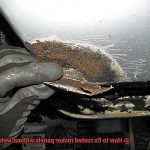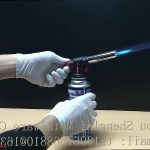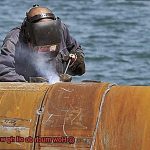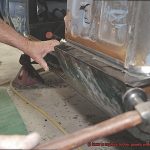Have you ever stared too long at a bright light and felt a sudden, sharp pain in your eyes?
Well, that’s just the tip of the iceberg when it comes to experiencing welding flash. Also known as arc eye, welder’s flash or photokeratitis, this painful and temporary eye condition is caused by prolonged exposure to ultraviolet (UV) or intense blue light.
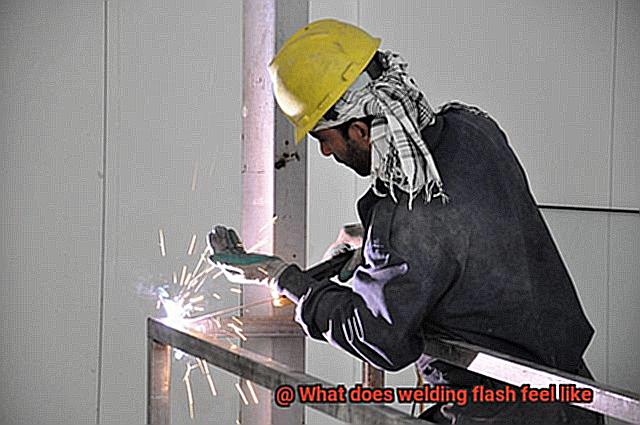
Welding flash is an occupational hazard that plagues welders and other professionals working in industries that require welding or soldering. The intense light produced by the welding torch can reflect off metal surfaces, casting a blinding flash into the eyes.
And let me tell you – it’s not a pleasant experience. The pain and discomfort caused by welding flash can be debilitating.
Imagine feeling like you have sand or dust in your eyes, along with intense burning, tearing and sometimes swelling. The symptoms usually arise a few hours after exposure and can last for up to 24 hours.
That’s why it’s essential for welders to protect themselves from this painful condition by wearing protective gear such as a face shield, welding helmet with proper filters, and safety glasses. Prevention is key.
So, if you’re looking to learn more about this condition – keep reading.
What is Welding Flash?
Contents
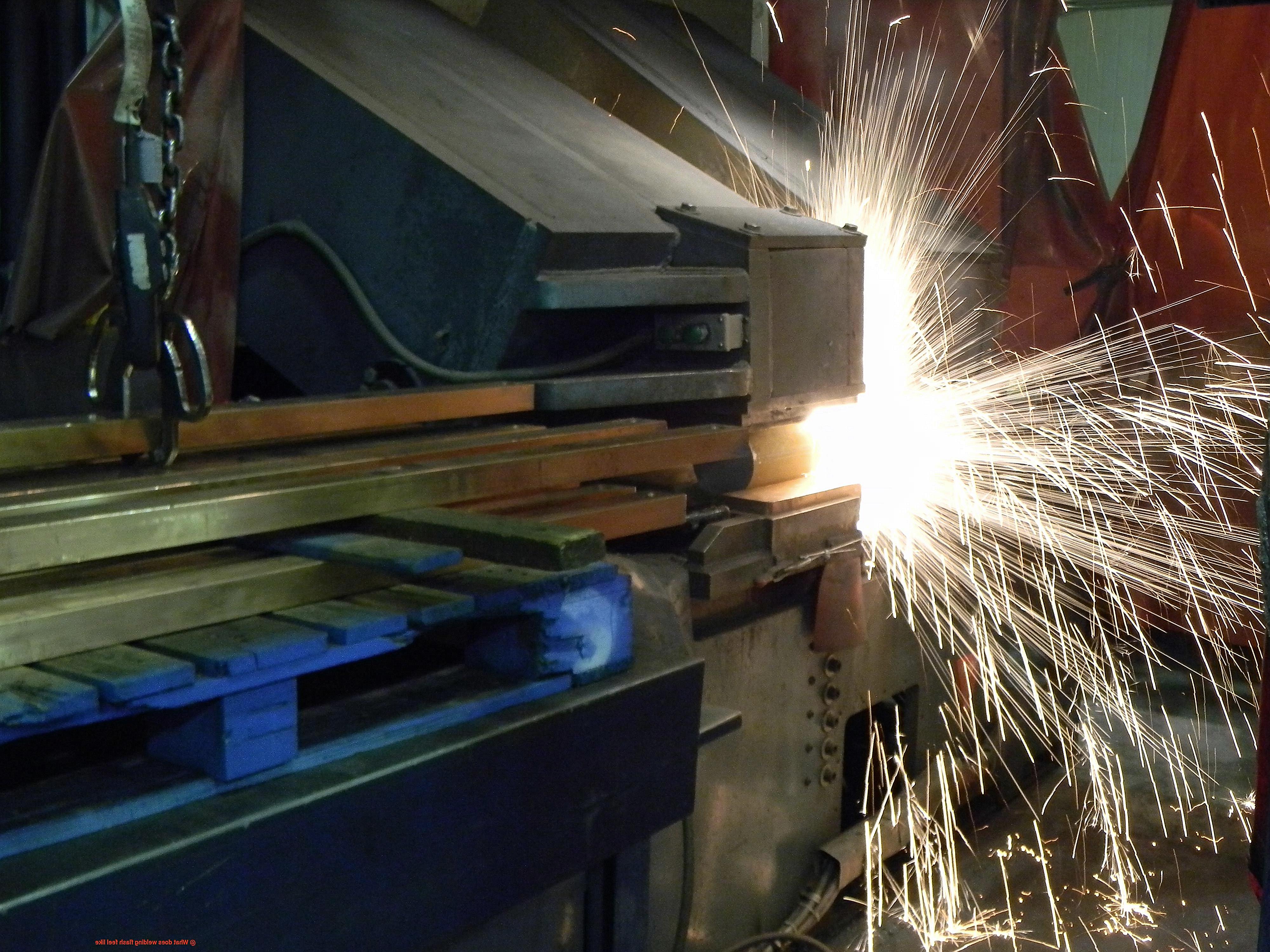
Then you need to know about welding flash, also known as arc eye or flash burn.
It’s a painful condition that occurs when your eyes are exposed to bright ultraviolet (UV) light from welding arcs. The intense light can cause severe burns to the cornea, which is the clear front part of the eye.
You may experience symptoms such as pain, redness, tearing, sensitivity to light, and even temporary blindness. The pain associated with welding flash can range from mild to severe and can last for hours or even days.
Unfortunately, welders who don’t wear proper eye protection are at risk of getting welding flash. This can happen when they use a welding helmet without a darkened lens or safety goggles.
It can also happen when welders look at the welding arc directly without adequate protection. It’s important to note that welders may not feel the effects of welding flash immediately.
Symptoms may develop several hours after exposure to the bright light. Therefore, it’s crucial for welders to protect their eyes at all times and seek medical attention if they experience any symptoms of welding flash.
Imagine feeling like you have sand particles in your eyes, or like someone is poking your eye with a sharp object. These are just some of the unpleasant sensations that come with welding flash.
In addition to pain, you may experience headaches, watering eyes, and sensitivity to light. The good news is that you can prevent welding flash by always wearing proper eye protection when welding.
A welding helmet with a darkened lens or safety goggles are essential to protect your eyes from the intense UV light emitted during welding. Never look at the welding arc directly without adequate protection.
If you do experience welding flash, seek medical attention immediately. While the symptoms may be temporary, they can be extremely painful and potentially cause long-term damage to your eyesight.
The treatment may include prescription eye drops, pain medication, and rest. In conclusion, protecting your eyes with proper eye protection is crucial when welding.
What Does Welding Flash Feel Like?
Welding flash is not a sensation any welder wants to experience.
It’s a painful and uncomfortable feeling that can cause severe damage to the eyes and skin. When welding, the bright light produced by the arc can be blindingly intense, causing a flash of light that’s similar to staring directly at the sun.
This flash can be so bright that it causes temporary blindness and a burning sensation on the skin, especially around the eyes, neck, and arms. The feeling of welding flash is often described as a hot, searing pain that can last for hours.
But the real danger of welding flash lies in its potential long-term impact on the eyes. Repeated exposure to welding flash can lead to serious eye problems such as cataracts, macular degeneration, and even blindness.
As an expert in welding, I highly recommend wearing appropriate protective gear such as a welding helmet with a darkened lens or safety goggles with side shields. Proper ventilation in your work area is also crucial to minimize exposure to toxic fumes that can exacerbate the effects of welding flash.
If you do experience welding flash, seek medical attention immediately. Treatment may include pain relief medication or antibiotic ointment for any burns or cuts on the skin.
Eye drops or ointments can also help soothe and heal any damage to the eyes. In summary, welding flash is not something to take lightly.
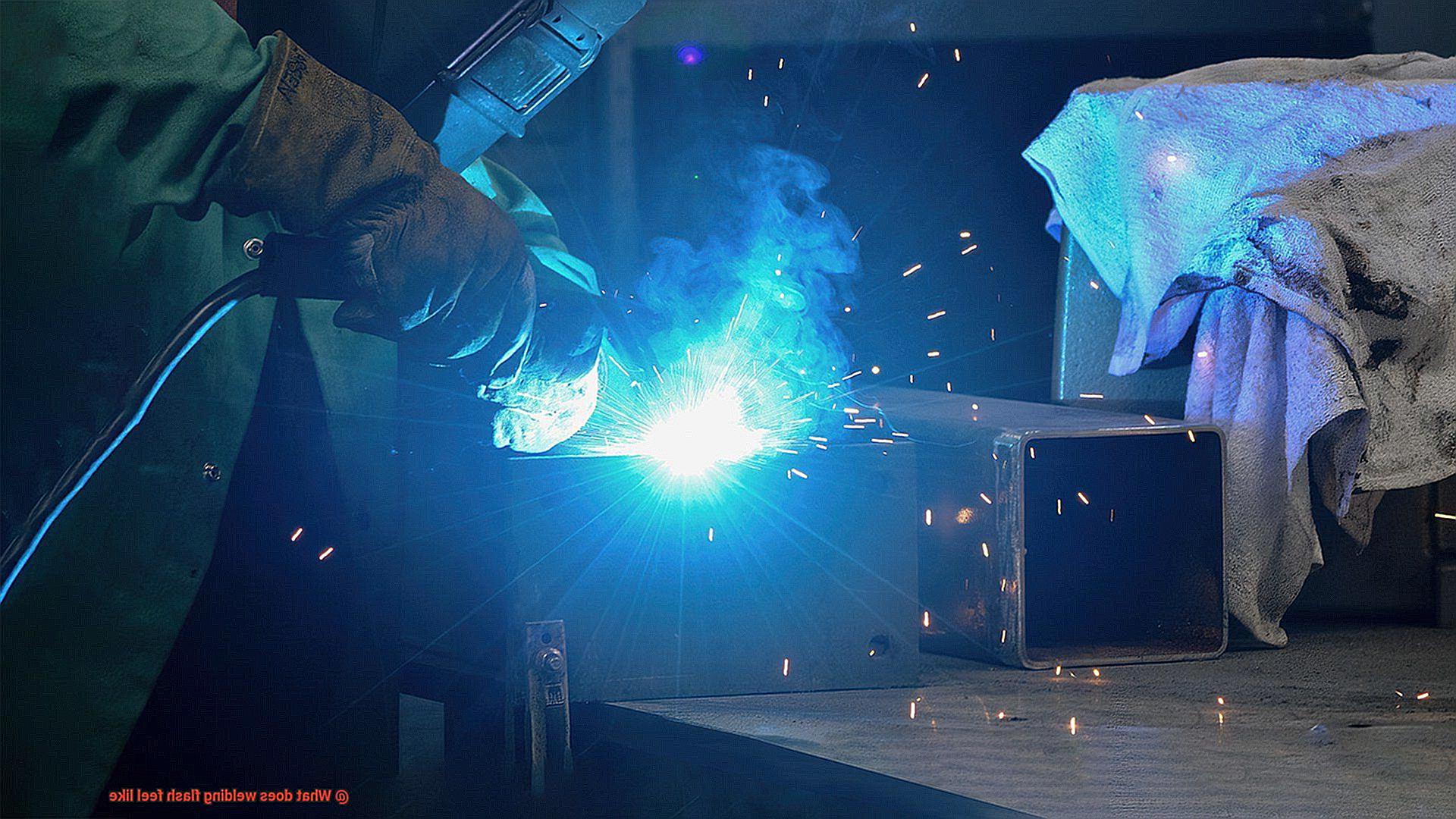
By wearing protective gear and seeking medical attention when necessary, welders can prevent long-term damage and continue working safely.
How to Prevent Welders Flash
Welding is a crucial and rewarding profession, but it comes with its fair share of dangers.
One of the most common hazards that welders face is welder’s flash, a painful condition caused by exposure to ultraviolet light emitted during welding.
Fortunately, there are simple yet effective measures that you can take to prevent welder’s flash and protect your eyesight.
Wear Proper Protective Gear
Wearing appropriate protective gear should be your top priority when welding.
A welding helmet with a shaded lens and safety glasses underneath will shield your eyes and face from the intense light and heat generated during welding.
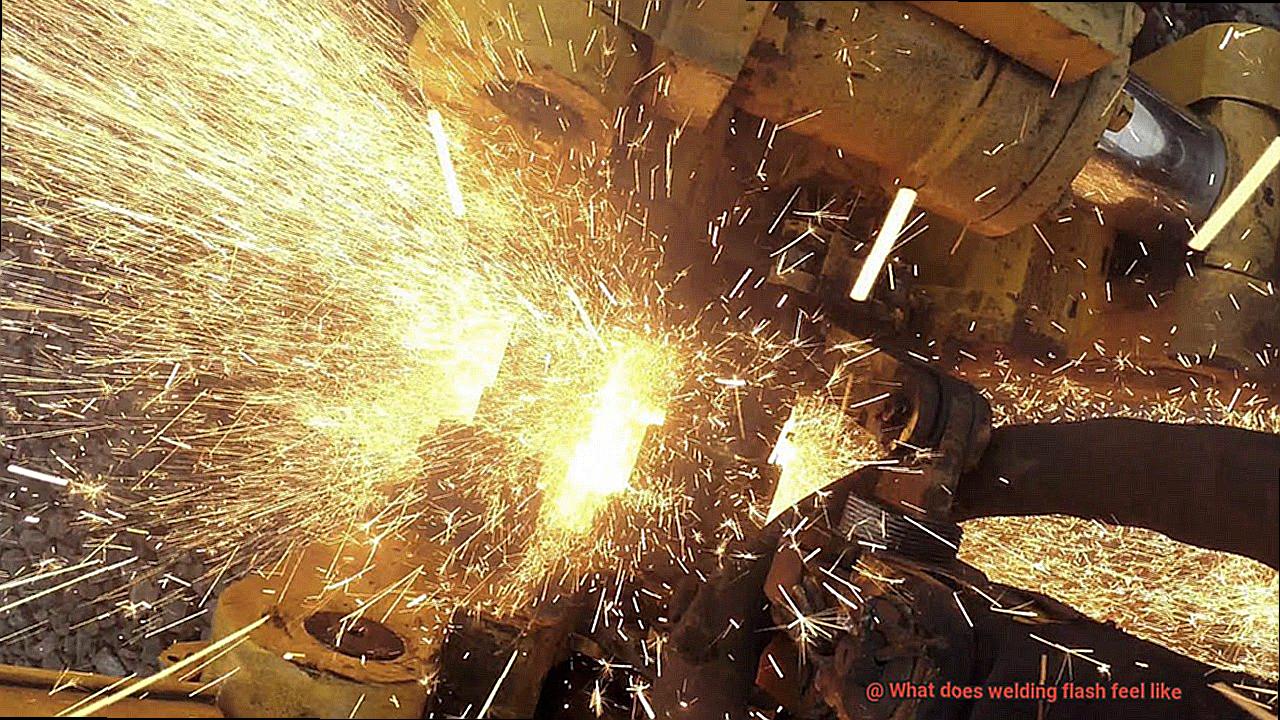
Gloves and long-sleeved clothing made of flame-resistant material will protect you from flying sparks or debris.
Ensure Proper Ventilation
Ventilation is vital in welding to prevent exposure to harmful fumes and gases produced during the process. Always work in a well-ventilated area or use a ventilation system to remove fumes from your work area and minimize your risk of exposure.
Take Regular Breaks
Taking regular breaks is essential to prevent eye strain and fatigue, which can increase the risk of welder’s flash. Take a break every 20-30 minutes to give your eyes a chance to rest and reduce the risk of injury.
Receive Proper Training
Proper training is crucial to prevent accidents and injuries when welding. Learning how to position yourself correctly during welding and how to properly use equipment can significantly reduce the risk of welder’s flash.
Get Regular Eye Exams
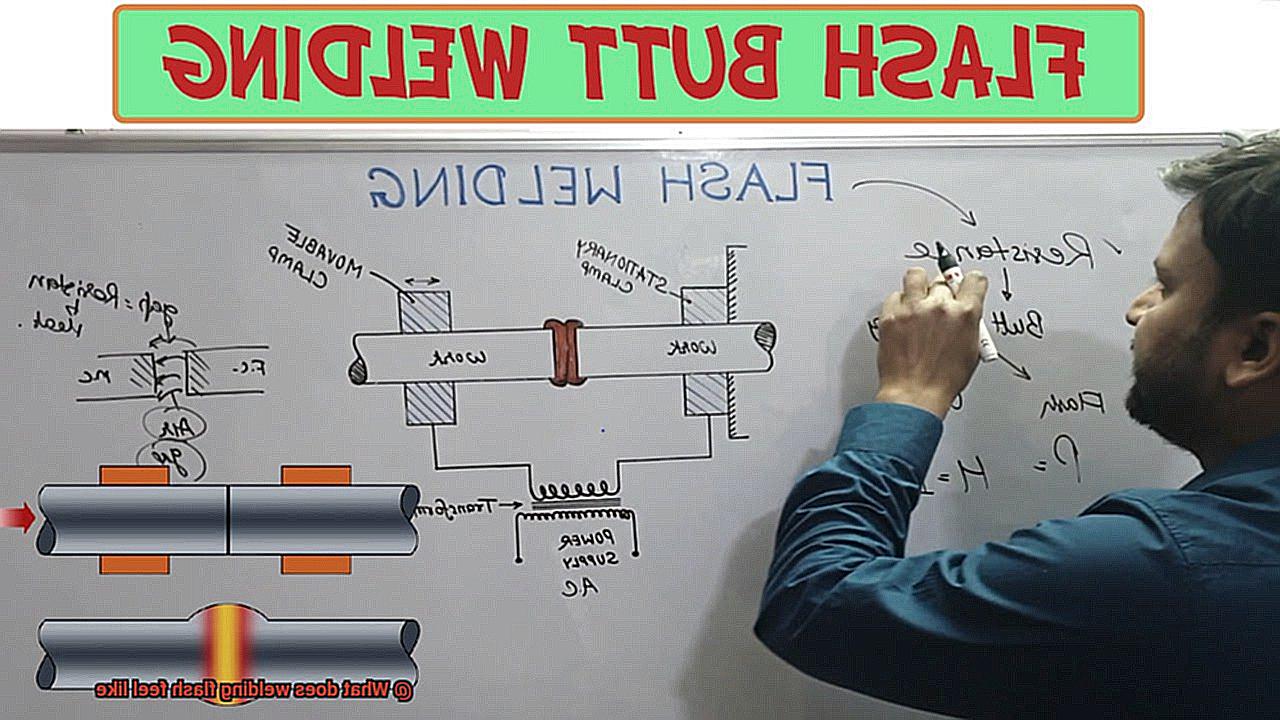
Regular eye exams are essential for detecting any changes or damage caused by welding early on. Catching potential issues early can help prevent long-term damage to your eyesight.
In conclusion, preventing welder’s flash requires taking necessary precautions such as wearing proper protective gear, ensuring proper ventilation, taking regular breaks, receiving proper training, and having regular eye exams.
By following these simple yet effective measures, welders can significantly reduce their risk of getting flash burns and protect their eyesight in the long run.
How to Treat Flash Burn
Welding is a fantastic skill to have, but it comes with its risks. One of these risks is flash burn, also known as welder’s flash or arc eye.
This painful condition occurs when the eyes are exposed to bright ultraviolet light from welding without proper eye protection. When UV light hits the eyes, it damages the cornea and can lead to temporary loss of vision.
If you experience flash burn, it’s important to take immediate action to treat it and prevent long-term damage.
Prevention is Key: Protecting Your Eyes from UV Light
The best way to treat flash burn is to prevent it from happening in the first place. Invest in proper eye protection such as goggles or a welding helmet with a proper shade level. Make sure your gear is appropriate for the type of welding you’re doing and replace any damaged or worn-out equipment. Taking breaks from welding can also help reduce your risk of flash burn.
Home Remedies for Flash Burn Relief
If you do experience flash burn, there are several home remedies you can try to relieve the symptoms. Applying a cold compress to the affected eye can help reduce swelling and inflammation. Over-the-counter pain medication such as ibuprofen or acetaminophen can help relieve pain and discomfort. Eye drops that contain lubricants or artificial tears can also help keep your eyes moist and reduce dryness.
When to Seek Medical Attention
While most cases of flash burn can be treated at home, it’s important to seek medical attention if your symptoms persist or worsen over time. An eye doctor can examine your eyes and prescribe stronger pain medication or antibiotic eye drops if necessary. They can also check for any long-term damage to your vision.
The Importance of Eye Safety in Welding
Flash burn is a painful reminder of the importance of eye safety in welding. Your eyes are precious – protect them at all costs. Take the necessary steps to prevent flash burn by wearing proper eye protection and taking breaks when necessary.
So, treating flash burn involves taking immediate action by seeking medical attention, using home remedies such as cold compresses and over-the-counter medication, and preventing further exposure by wearing proper eye protection while welding
Do You Feel Welders Flash Immediately?
While the symptoms may not appear immediately, they can be quite severe and even lead to temporary vision loss.
To minimize your risk of experiencing welders flash, it’s important to take preventative measures and wear proper protective equipment. Even if you have a higher tolerance for exposure, you never know when your luck may run out.
If you suspect that you may have been exposed to welders flash, seek medical attention right away. The longer you wait, the more severe the symptoms can become.
Your doctor can prescribe eye drops or ointments to alleviate pain and discomfort and recommend over-the-counter pain relievers or cold compresses to reduce swelling. It’s important to remember that not everyone experiences welders flash in the same way.
Some people may be more sensitive to the exposure, while others may have a higher tolerance level. Either way, taking preventative measures is crucial.
Investing in proper eye protection and taking breaks from welding can make all the difference when it comes to protecting your eyesight.
How Painful is Welders Flash?
This condition, also known as arc eye or photokeratitis, can cause excruciating pain that varies from person to person.
Imagine a burning or stinging sensation in the eyes that can even lead to nausea and vomiting in severe cases – that’s how painful welders flash can be. Several factors play a role in determining the severity of pain associated with welders flash.
The intensity and duration of exposure, the type of welding process used, and an individual’s sensitivity to UV radiation all affect the level of discomfort experienced. Symptoms may not appear immediately, making it challenging to identify the cause of discomfort.
If you’ve fallen prey to welders flash, don’t despair. Several remedies can help alleviate the pain, such as over-the-counter pain relievers like ibuprofen or acetaminophen.
Applying a cold compress or artificial tears can also provide temporary relief. However, prevention is always better than cure when it comes to welders flash.
Protective gear, such as welding helmets and goggles designed to block out UV radiation, are essential for safeguarding your eyes. Taking breaks from welding work and working in well-ventilated areas can also reduce the risk of exposure.
By wearing protective gear and seeking medical attention if necessary, individuals can avoid this painful condition altogether and continue their welding work without any interruptions.
0AueSEjshUw” >
Conclusion
To sum up, welding flash is a painful and hazardous condition that can result from exposure to bright ultraviolet or intense blue light during welding.
Symptoms of this condition may include burning, tearing, swelling, and sensitivity to light. Therefore, it’s crucial for welders to wear appropriate protective equipment like a welding helmet with a shaded lens or safety goggles.
Ensuring proper ventilation in the work area is also essential to reduce exposure to toxic fumes that could worsen the effects of welding flash. Additionally, taking regular breaks and receiving adequate training are other preventive measures that can significantly lower the risk of getting flash burns.
If you do experience welding flash, it’s advisable to seek medical attention immediately. Treatment may involve pain relief medication or antibiotic ointment for any burns or cuts on the skin.
Eye drops or ointments can also help soothe and heal any damage to the eyes.

